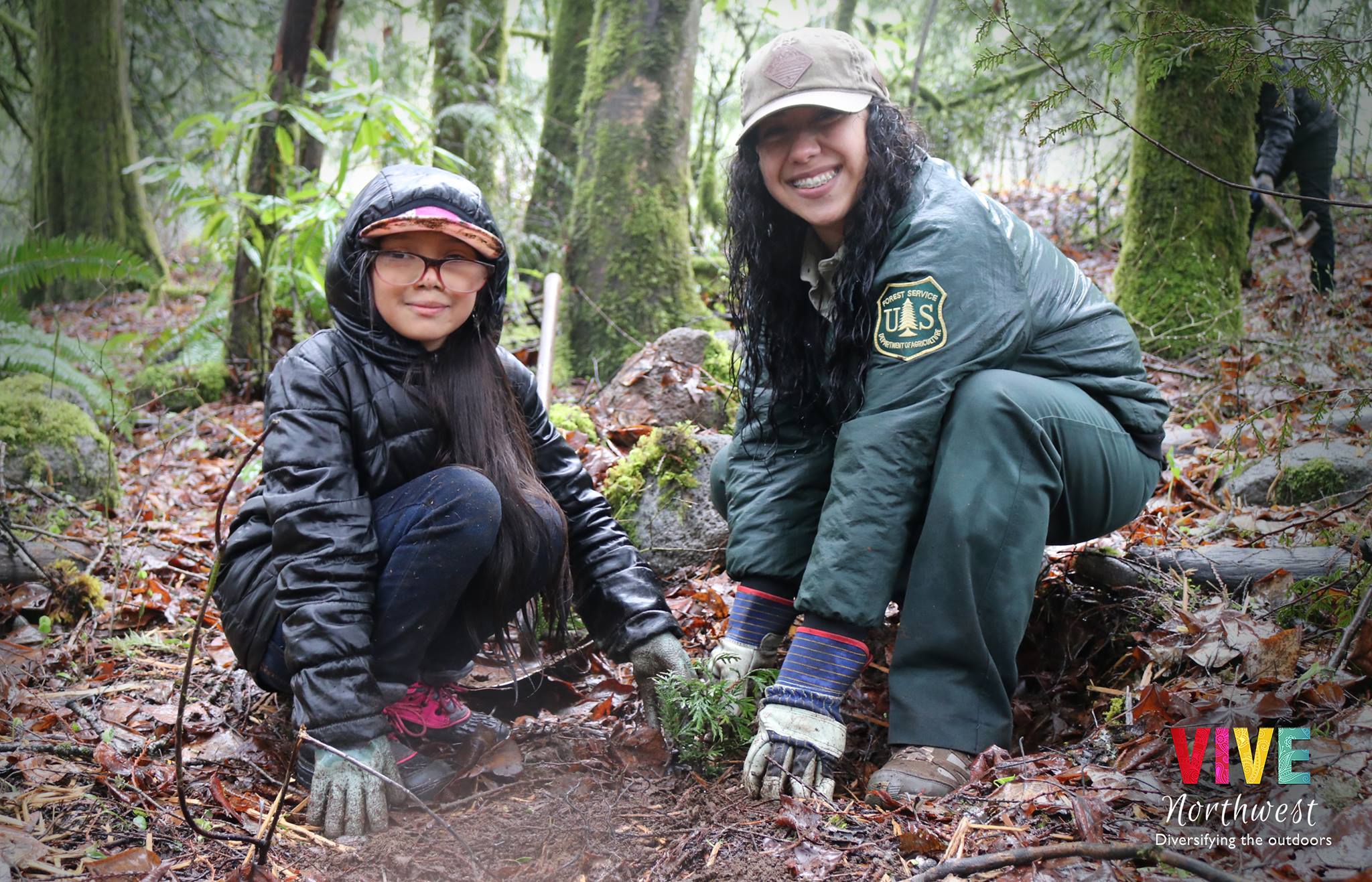Partnerships
 Partners are vital to achieve the Forest Service mission. We must work collectively to sustain the nation’s forests and grasslands and the critical benefits they provide. We steward the whole by engaging Tribes, States, communities, research organizations, academia, public institutions, non-governmental organizations, volunteers, and the private sector in mutually beneficial relationships that promote ecological and social vitality.
Partners are vital to achieve the Forest Service mission. We must work collectively to sustain the nation’s forests and grasslands and the critical benefits they provide. We steward the whole by engaging Tribes, States, communities, research organizations, academia, public institutions, non-governmental organizations, volunteers, and the private sector in mutually beneficial relationships that promote ecological and social vitality.
Conservation depends on all of us seeing and doing our part. It’s about diverse groups of people coming together, learning from each other, and finding common ground.
The Pacific Northwest Region’s partnership approach is based on the following guiding principles:
- Build upon the strengths of existing partnerships—recognize relationship histories and scale up success.
- Bring new partners to the table—acknowledge partnership gaps; recognize the shared interests of diverse stakeholders and sectors in natural resource stewardship.
- Create a more effective and efficient organization—expand achievements through working together, taking a holistic approach to our programming and streamlining administrative processes.
- Share knowledge and learn together—encourage information-sharing and innovation; monitor progress and adjust course as needed.
Where Do I Start?
Visit the Forest Service Partnership Resource Center to learn more about programs and opportunities.
Find specific tools and resources at our Partnerships 101 website, which provides “How to” information for any stage of collaboration starting with understanding the Forest Service, legal requirements, funding and other details.
Regional focus areas
The following partnership focus areas include examples of how we work together in Oregon and Washington:
Landscape Scale Restoration
Tools and initiatives such as Good Neighbor Authority, the Joint Chiefs’ Landscape Restoration Partnership, the Collaborative Forest Landscape Restoration Program, Collaborative Aquatic Restoration Program and Wildfire Crisis Strategy are significant investments in coordinated approaches to increase the pace, scale and effectiveness of conservation.
Recreation and Access to the Outdoors
Partners like the Washington Trails Association and Trailkeepers of Oregon are critical to maintain recreation experiences on public lands. Check out our volunteer and service page for more information on how these and other partners sustain trail networks and critical infrastructure for the National Forest System.
Collaborative Forest Management
The Pacific Northwest Region has a strong history of supporting and engaging with place-based forest collaborative groups to identify and address shared stewardship goals. The Art of Collaboration offers helpful resources and case studies. We work closely with technical assistance organizations like Sustainable Northwest, the Rural Voices for Conservation Coalition, the National Forest Foundation and the Ecosystem Workforce Program to understand best practices for collaboration and support collaborative capacity.
Conservation Finance
The agency’s Conservation Finance Program is developing innovative shared investment models that engage diverse sources of funding to support the USDA Forest Service mission. The Innovative Finance for National Forests grant program is a great resource for partners interested in exploring opportunities with us.
Workforce Development
As we’re called on to respond to ever-growing challenges, we have an unprecedented opportunity to stabilize and diversify our workforce. Organizations like Northwest Youth Corps and Mount Adams Institute help us invest in our nation’s future conservation leaders.
Features
Forest Service Supports Inclusive Expedition to Ape Cave, Mount St. Helens

On Feb. 3, 2024, participants from Big Brothers Big Sisters Columbia Northwest and Urban Nature Partners PDX joined the Pacific Northwest Region of the Forest Service and Mount St. Helens Institute for a snowshoe hike to Ape Cave on Mount St. Helens National Volcanic Monument.

